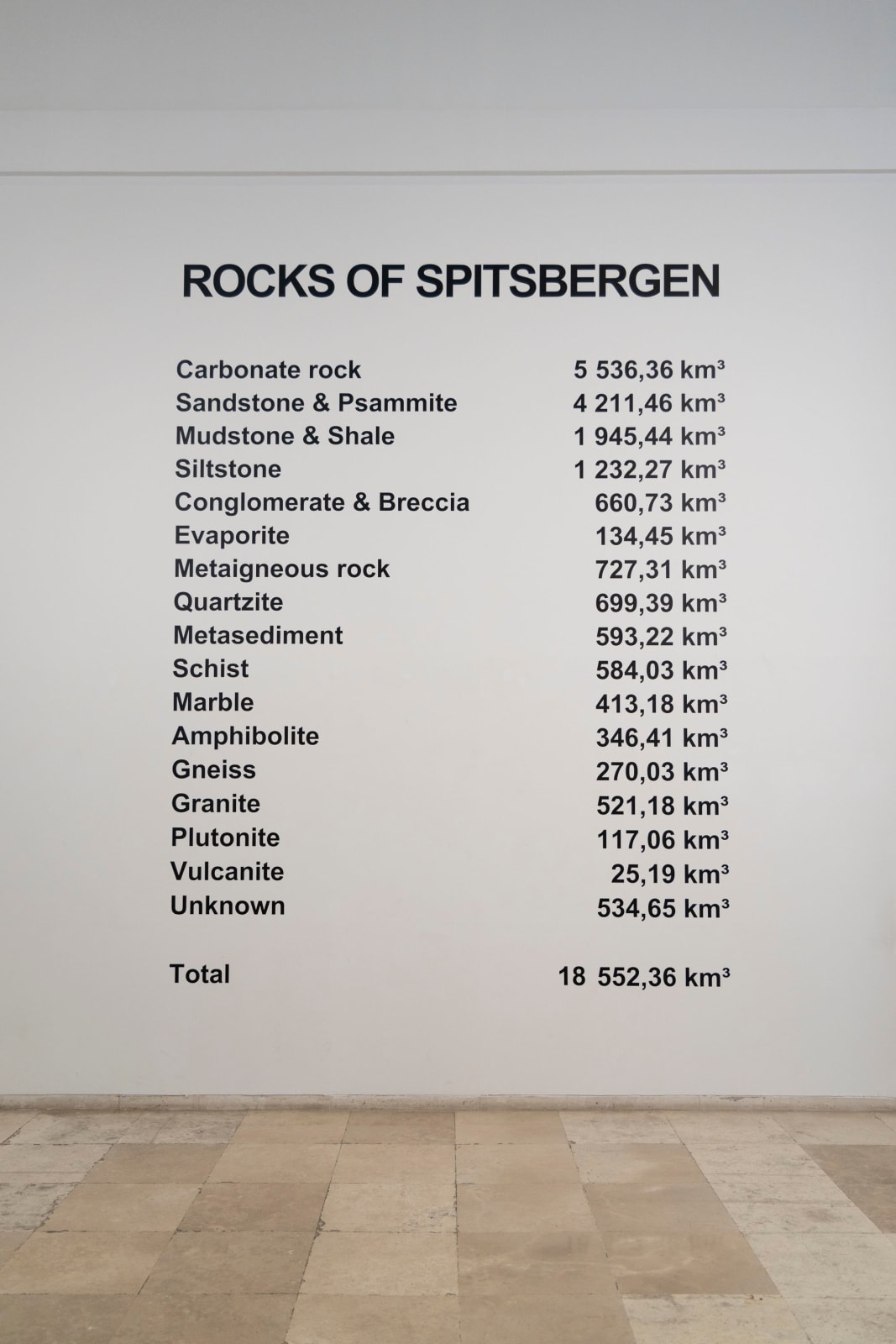Lara Almarcegui
Rocks of Spitsbergen (Svalbard), 2014
Vinyl lettering on wall
Variable dimensions
Edition of 3 + 1 AP
Copyright The Artist
The work consists of an attempt to calculate the weight of Norway’s largest island, Spitsbergen, in the Svalbard Archipelago. A long and complex calculation process is shown here as a...
The work consists of an attempt to calculate the weight of Norway’s largest island, Spitsbergen, in the Svalbard Archipelago. A long and complex calculation process is shown here as a simple list of the names of the different rock types and how many tons there are of each in the island’s bedrock. It adopts a pragmatic approach to the real world, but with results that are thought-provoking and poetic.
A series of scientific terms beside a column of numbers. But what is a number? Numbers are tools to describe a confusing reality, to pin it down and control it. The numbers here are the results of a painstaking and arduous research process that has been going on for almost a year. The figures describe the island, overlaying it like a grid, as finely meshed as possible. They constitute an attempt to get to know a landscape, to monitor and understand it, an attempt to represent one small section of the earth’s surface, bounded and framed by the surrounding water.
Almarcegui’s work is a representation of the island of Spitsbergen, in the same way that a photograph or a painting can be a picture of a landscape. It refers to but is not itself a landscape. It is a new entity created to correspond with an existing landscape. As an artwork it exists in its own right. This is a work that physically embodies the negotiation between culture and nature, a work in which the land rises above sea level and simply is. It has no purpose, but is simply there. Silent, slow, passive. Familiar, yet simultaneously mysterious and impenetrable. So concrete it verges on abstraction.
A series of scientific terms beside a column of numbers. But what is a number? Numbers are tools to describe a confusing reality, to pin it down and control it. The numbers here are the results of a painstaking and arduous research process that has been going on for almost a year. The figures describe the island, overlaying it like a grid, as finely meshed as possible. They constitute an attempt to get to know a landscape, to monitor and understand it, an attempt to represent one small section of the earth’s surface, bounded and framed by the surrounding water.
Almarcegui’s work is a representation of the island of Spitsbergen, in the same way that a photograph or a painting can be a picture of a landscape. It refers to but is not itself a landscape. It is a new entity created to correspond with an existing landscape. As an artwork it exists in its own right. This is a work that physically embodies the negotiation between culture and nature, a work in which the land rises above sea level and simply is. It has no purpose, but is simply there. Silent, slow, passive. Familiar, yet simultaneously mysterious and impenetrable. So concrete it verges on abstraction.




